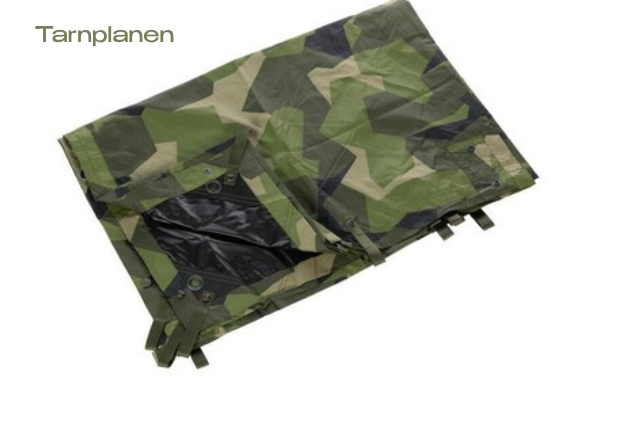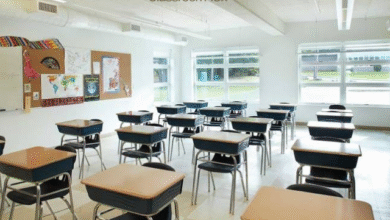Tarnplanen: Ultimate Guide to Durable Protective Tarps

In the realm of outdoor protection and industrial coverage, tarnplanen is an essential term (translated from German “tarpaulin”). Tarnplanen serve as practical and versatile solutions for construction site managers, camping enthusiasts, or anyone looking for dependable weather protection. However, not all tarps are created equally. Without appropriate advice, it could be daunting to pick a type, material, and size.
With this guide, I intend to explain tarnplanen materials and features alongside usage and care recommendations. Regardless of whether you are a novice or seasoned professional, the guide aims to assist you in leveraging your spending by providing guidance for informed decisions.
Table of contents
What is a Tarnplanen?
Tarnplanen is best described as a protective shield: a durable, waterproof sheet covering objects, shielding them from environmental elements such as rain, sun, wind, and dust. These tarps are now domestically, commercially, and recreationally available, although they were primarily industrial, military, and agricultural items.
Common Uses of Tarnplanen:
- To cover vehicles, boats and other machinery
- To protect construction materials
- As a temporary roofing or shelter
- As a camping ground cover or tent extension
- For emergency weatherproofing
Classification of Tarnplanen by Material
Selecting the correct material is crucial in achieving the desired functionality and durability of your tarnplanen.
1. Polyethylene (PE) Tarps
- Cheap and lightweight
- Waterproof and resistant to UV rays
- Suitable for household and temporary use.
2. PVC Tarps
- Thick, heavy-duty, and flame-retardant
- Resistant to wear and tear, chemicals, and corrosion
- Best suited for industrial and transport applications.
3. Canvas Tarps
- Breathable, durable, and water-resistant (not waterproof)
- Made out of cotton or polyester blends
- Best for lumber and hay that require airflow
4. Mesh Tarps
- Used in landscaping
- scaffolding and sports
- Block some sunlight while allowing ventilation
Key Features To Think About When Purchasing Tarnplanen
Coverage and Size
- Choose a tarp that allows for overlap along the perimeter to ensure secure fastening. Measure accurately the area you wish to cover.
Grommets And Reinforcements
- Look for edges that are double stitched or heat sealed. Metal reinforced eyelets or d-rings will aid in securing the tarp in place.
Waterproofing And UV Protection
- Check, especially for tarnplanen, that it is labelled waterproof (not just water resistant) and UV treated.
Weight and Thickness
- Tarps with greater density (200 to 300 GSM) are well suited for long-term use in demanding environments.
How to Choose the Right Tarnplanen
The tarnplanen’s selection is based on the specific criteria provided below for choosing the most suitable tarnplanen:
Step 1: Define Your Use Case
Do you plan to cover a vehicle, shield a garden or construct a temporary facility?
Step 2: Consider Environment
Are there strong winds? Direct exposure to sunlight? Heavy precipitation? All of them have their own impact on the material selection.
Step 3: Decide on Portability
Although PVC tarps are heavier and more enduring, PE tarps are much easier to carry, fold, and store due to their lighter weight.
Step 4: Match Size to Area
When estimating the space needed, also include extra allowance for draping, folding, and securely fastening the tarp.
Maintenance and Storage Suggestions
To increase the longevity of tarnplanen:
- Wash with mild soap and water after use.
- Ensure thorough drying before storing to inhibit mould and mildew.
- Avoid sharp creases when folding. Rolling loosely is preferable.
- Store away from sunlight in a dry place.
Common Mistakes to Avoid
- Lightweight tarps in storm-prone areas.
- Non-UV treated options for long-term outdoor use.
- Over stretching grommets resulting in tears.
- Leaving tarps wet or folded in moisture-heavy environments.
What distinguishes tarnplanen from standard tarps?
While “tarp” is a general term used to cover any durable covering, tarnplanen refers to specialised, high-performance tarps, particularly used in Europe.
| Feature | Tarnplanen | Standard Tarp |
| Material | Often PVC or heavy PE | Typically light PE |
| Durability | Industrial-grade | General use |
| UV & Flame Resistance | High | Low to moderate |
| Price | Higher | Lower |
Case Study: Construction Site in Munich
During a construction project in Munich, contractors applied heavy-duty PVC tarnplanen to protect materials from the weather during winter. The use of UV-treated and waterproof tarnplanen safeguarded the materials from adverse weather conditions, resulting in an estimated €15,000 in avoided costs.
Where to Buy Quality Tarpaulins
- When looking for tarpaulins, consider paying attention to:
- A manufacturer’s reputation and CE accreditation
- User feedback and conducted reviews
Exclusivity of warranty and post-purchase services
Some of the best suppliers in Europe are:
- Planenmeister.de
- Tarpaulin-shop.eu
- Gewebeplanen-profi.de
Visual Comparison Guide
Insert Infographic: PE vs PVC vs Canvas vs Mesh – Best Use Cases
Alt text: “Comparison chart showing types of tarpaulins and their applications.”
Insert Image: Tarpaulins covering a truck on construction site
Alt text: “Heavy-duty PVC tarpaulins used for truck protection.”
Conclusion
Using the right tarpaulins can significantly protect your assets from extreme environmental elements. If you are covering a vehicle, setting up a camping shelter, or securing materials on a construction site, tarpaulins provide the durability, waterproofing, and UV shielding required.
From lightweight polyethylene to heavy-duty PVC, a tarpaulin tailored to your use case is readily available.
Properly safeguarding your equipment with tarpaulins extends its life while simultaneously saving you money by avoiding weather damage. Don’t forget to take size, GSM thickness, grommets, and material composition into account. Enhanced performance comes with proper tarpaulin maintenance using appropriate storage during non-use periods and regular cleaning.
As suggested by their name, tarpaulins are simple covers; however, their value for protection, reliability, and functionality cannot be overlooked. For outdoor and industrial use, don’t settle for low-quality coverings. Look for tarpaulins that provide the utmost safety and strength standards, and their superior grade won’t let you down.
FAQS
1. What is the difference between tarnplanen and standard tarps?
Tarnplanen refers to high-performance, industrial-grade tarpaulins—often made from heavy-duty PVC or PE—designed for long-term outdoor or commercial use. In contrast, standard tarps are typically lighter, less durable, and offer lower resistance to UV rays and flame exposure.
2. How do I choose the right tarnplanen for my needs?
To select the ideal tarnplanen, consider your specific use case, the environmental conditions (e.g., sunlight, rain, wind), desired portability, and size requirements. Heavier-duty tarnplanen with high GSM and UV treatment are best for construction and transport, while lightweight PE options work well for temporary domestic use.
3. What maintenance tips extend the life of a tarnplanen?
To prolong the life of your tarnplanen, clean it with mild soap and water after use, dry it completely before storage, and avoid sharp folds by rolling it loosely. Store in a cool, dry place away from direct sunlight to prevent UV damage and mildew.




